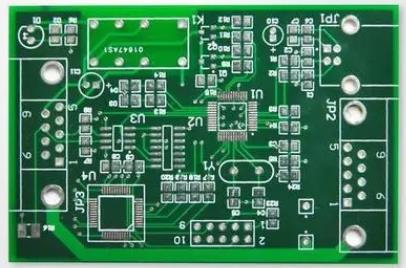1 Layout/wiring, impact on electrical performance
The digital ground wire should be separated from the analog ground wire. This is a certain degree of difficulty in actual operation. To deploy a better board, you must first understand the electrical aspects of the IC you are using, which pins will generate higher harmonics (digital signal or switching square wave signal> rising/falling edge), and which The pins are easy to induce electromagnetic interference,> the signal block diagram (signal processing unit block diagram) inside the IC helps us understand.
The layout of the whole machine is the primary condition for determining the electrical performance, and the layout of the boards is more considered to be the direction or flow of the signal/data between the ICs. The main principle is to be as close as possible to the power supply part that is prone to electromagnetic radiation; weak signal processing Part of it is mostly determined by the overall structure of the equipment (that is, the overall planning of the equipment in the early stage), as close as possible to the input end of the signal or the detection head (probe), which can better improve the signal-to-noise ratio and provide for subsequent signal processing and data recognition Cleaner signal/accurate data.

2 PCB board copper platinum processing
As the current IC working clock (digital IC) is getting higher and higher, its signal puts forward certain requirements on the width of the line. The width of the trace (copper platinum) is good for low-frequency and strong current, but for high-frequencyPCB signals and data For line signals, this is not the case. Data signals are more about synchronization. High-frequency signals are mostly affected by the skin effect. Therefore, high-frequency signal traces should be thin rather than wide, short rather than long, which involves layout issues. (Coupling of signals between devices), which can reduce induced electromagnetic interference. The data signal appears on the circuit in the form of pulses, and its high-order harmonic content is the decisive factor to ensure the correctness of the signal; the same wide copper platinum will produce a skin effect (distribution) for the high-speed data signal. >Capacitance/inductance becomes larger), this will cause the signal to deteriorate, the data recognition is incorrect, and if the line width of the data bus channel is inconsistent, it will affect the synchronization problem of the data (causing inconsistent delay), in order to better control the data The problem of signal synchronization, so a serpentine line appears in the data bus routing, which is to make the signal in the data channel more consistent in delay.
The large-area copper paving is aimed at shielding interference and inductive interference. The double-sided board can allow the ground to be used as a copper layer; while the multi-layer board does not have the problem of copper paving, because the power layer in between is very good. To shielding and isolation.
3 Layer layout of multilayer board
Take a four-layer board as an example. The power supply positive/negative layer should be placed in the middle, and the signal layer should be routed on the outer two layers. Note that there should be no signal layer between the positive and negative power layers. The advantage of this method is to maximize It is possible to allow the power layer to play the role of filtering/shielding/isolation, while facilitating the production of PCB manufacturers to improve the yield rate.
4 vias
Engineering design should minimize the design of vias, because vias will generate capacitance, but are also prone to burrs and electromagnetic radiation. The aperture of the vias should be small rather than large (this is for electrical performance; but too small apertures will increase the difficulty of PCB production, generally 0.5mm/0.8mm, 0.3mm is used as small as possible), small apertures are used in the copper sinking process The probability of subsequent burrs is smaller than that of large apertures. This is due to the drilling process.
5 Software application
Every software has its ease of use, but you are familiar with the software. I have used PADS (POWER PCB)/PROTEL. When making simple circuits (the circuits I am familiar with), I will use PADS directly. Layout; When making complex and new device circuits, it is better to draw the schematic diagram first, and do it in the form of a netlist, which should be correct and convenient. When Layout PCB, there are some non-circular holes.>There is no corresponding function to describe on the software.My usual approach is: open a layer dedicated to presentation>opening, and then draw the desired layer on this layer. The opening shape of the hole should of course be filled with the drawn wire frame. This is to better allow the PCB manufacturer to recognize its own expression and explain it in the sample documentation.
6 PCB sent to the manufacturer for sample
1) PCB computer files.
2) The layering scheme of the PCB board file (each electronic engineer has different drawing habits, the PCB file after the layout will be different in the layer application, so you must attach a white oil diagram/green oil diagram/circuit diagram of your file /Mechanical structure drawing/Auxiliary hole drawing, make a correct list document to explain your wishes).
3) PCB production process requirements, you need to attach a document to explain the process of making the board: gold plating/copper plating/tinning/sweeping rosin, board thickness specifications, PCB board material (flame retardant/non-flame retardant).
4) The number of samples.
5) Of course, you have to sign the contact information and the person in charge.